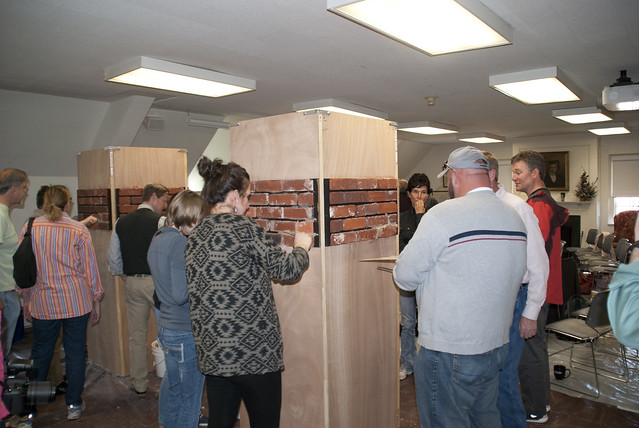On April 9, 2016, the Institute of Classical Architecture and Art - North Carolina and the Salem College Historic Preservation Program sponsored a Historic Building Trades Workshop at Salem College in Winston Salem, NC. Three master professionals in plaster work, woodworking, and brick masonry addressed historic restoration work through demonstrations and hands-on learning opportunities. Attendance expectations were exceeded with 43 students, teachers, building professionals, and homeowners interested in historic preservation attending the event.
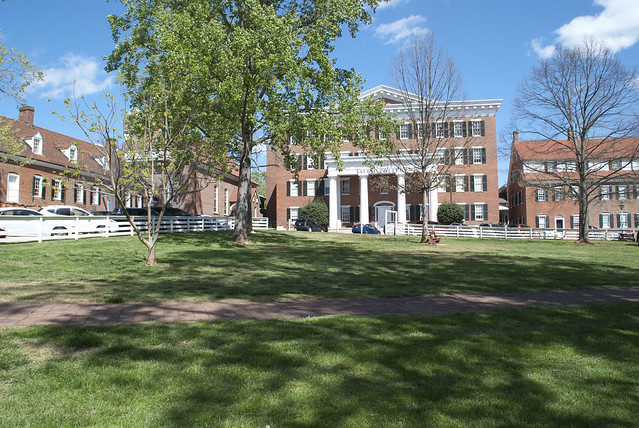 |
| Originally founded as Salem College and Academy for women in 1772, the college is ranked as the oldest women's college in the nation. The lovely campus near downtown Winston-Salem is a treasure of meticulously-maintained historic buildings and structures. |
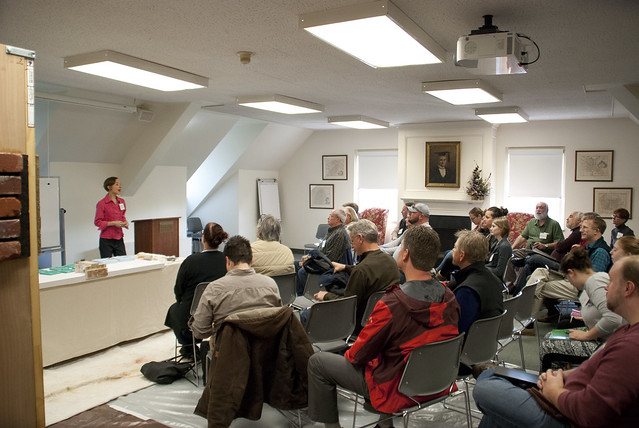 |
| Heather Fearnbach, Coordinator of the Historic Preservation Program at Salem College, kicked off the event. The program offers a Historic Preservation Certificate to students interested in the stewardship of historic structures. Numerous students working on their Certificates attended the event. |
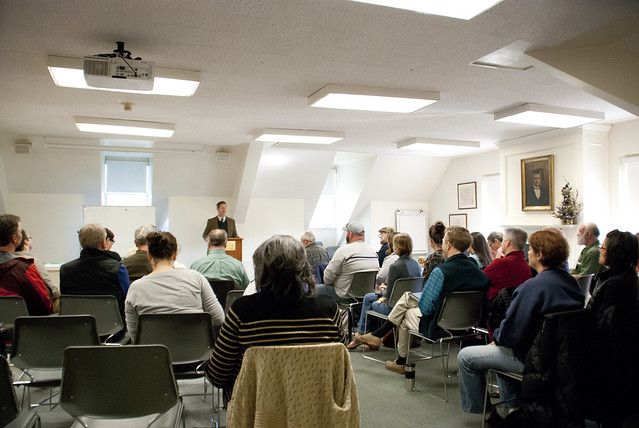 |
| Jeff Allen, Vice-President of the Institute of Classical Architecture and Art - North Carolina Chapter, discusses recent activities with the recently expanded North Carolina Chapter. |
The first topic, plaster repair in traditional buildings, was presented by Patrick Webb. Patrick is a heritage and ornamental plasterer and advocate for traditional hand craft in preservation, natural building and traditional architectural specification. He has taught as a Professor of Plaster Work at the American
College of the Building Arts in Charleston. He serves as technical consultant
to heritage plaster manufacturer Platres Vieujot, assisting them in proper
plaster systems and specifications .
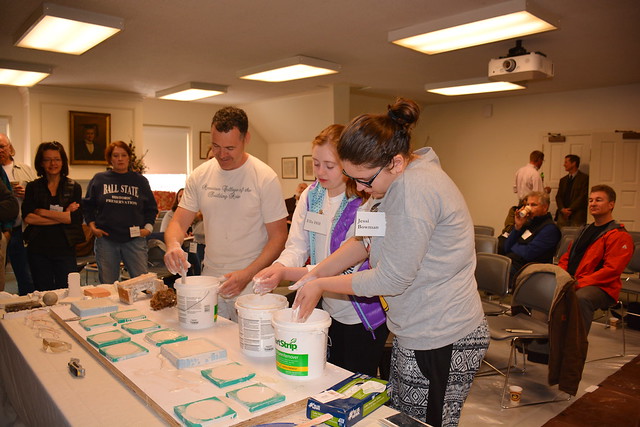 |
| As a hands-on workshop, attendees had the opportunity to mix plaster of Paris for cast molds. Photo courtesy of Heather Fearnbach. |
 |
| Students complete filling of the cast molds. |
 |
| Patrick prepares for a demonstration using a running mold. The jute is used as reinforcement material in the moulding. |
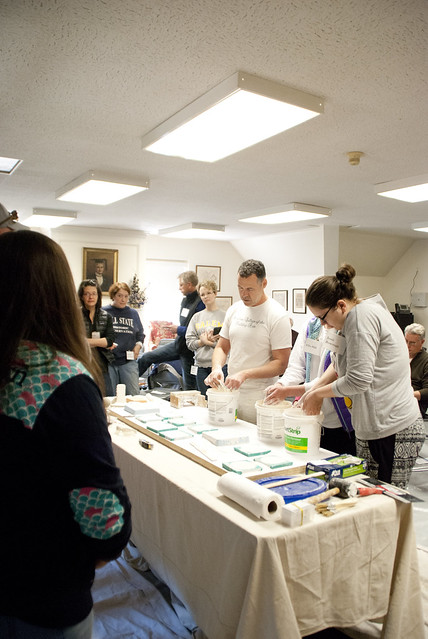 |
| The jute gets a thick coating of plaster |
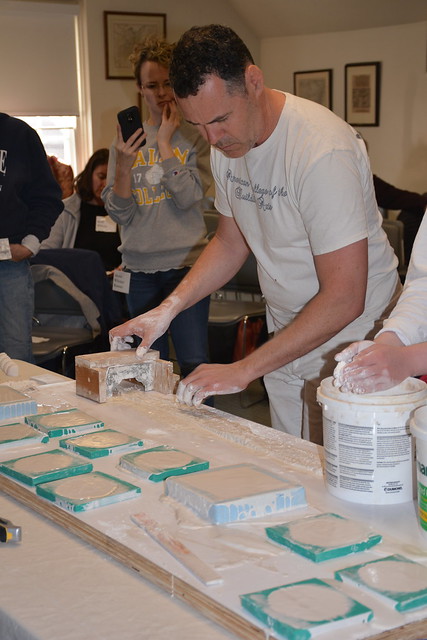 |
| The jute and first coat of plaster are lined up under the blade of the running mold. Photo courtesy of Heather Fearnbach. |
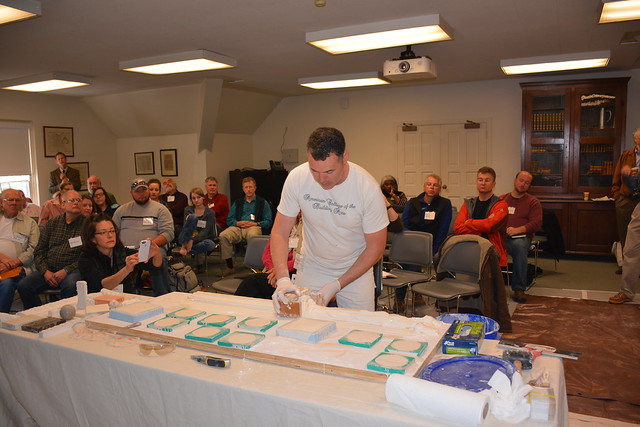 |
| After several more coats of plaster, the moulding is taking shape. Photo courtesy of Heather Fearnbach. |
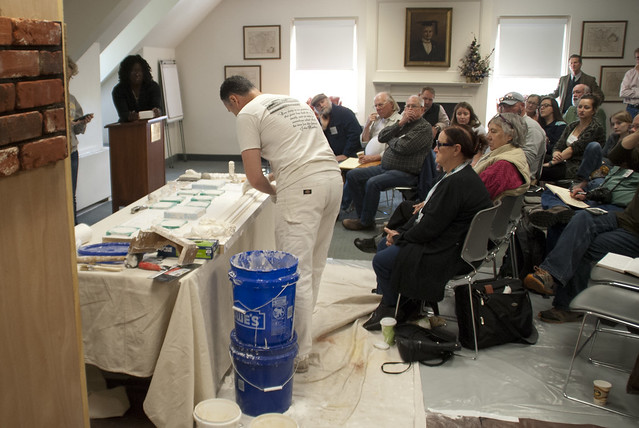 |
| After some final touch -ups... |
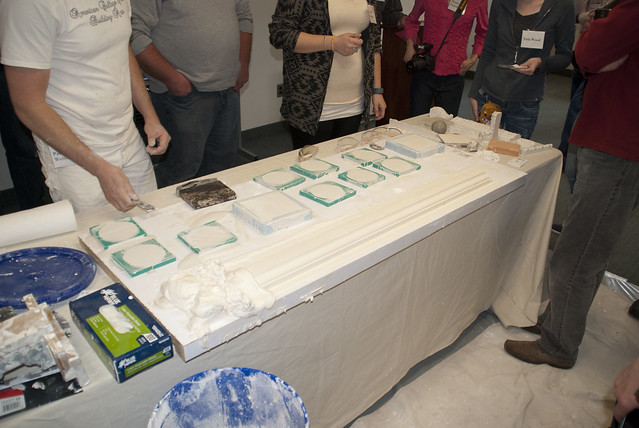 |
| The final result is a time-honored plaster molding that is enduring and beautiful. One great advantage of plaster mouldings is that they do not experience shrink-swell due to humidity changes that can be detrimental to wood mouldings. |
 |
| Once the plaster in the cast molds is set up, Patrick reveals the forms produced. |
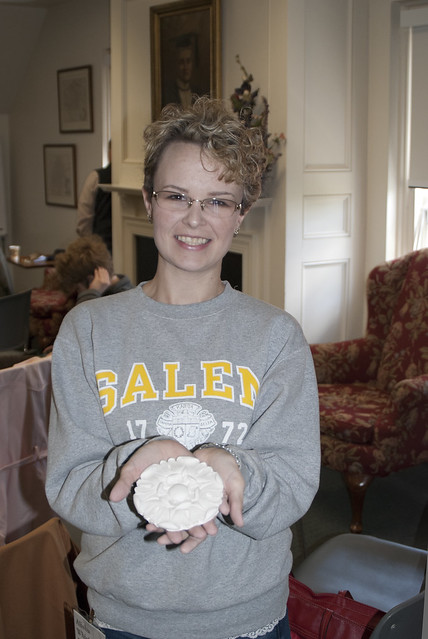 |
| Student Alisha Whicker Ramsey is happily rewarded with a beautiful plaster medallion souvenir. |
The second topic, woodworking with traditional hand tools, was presented by Daniel Chasse. Daniel is a Carpentry and Wood Technology Instructor in the Historic Preservation program at Edgecomb Community College in Tarboro, NC.
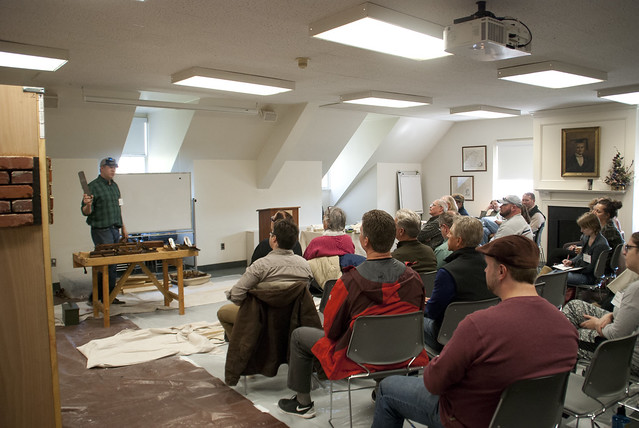 |
| Daniel's presentation focused on the many type of hand planers used in traditional woodwork. From very small finger planes used for musical instruments to jointer planes and Cooper planes 36" long or longer, Daniel has them in his collection. |
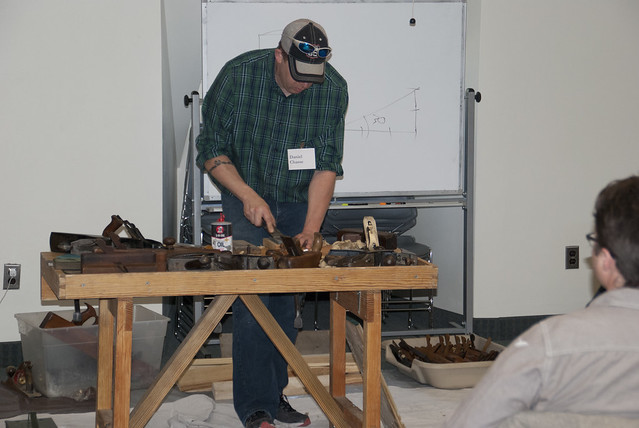 |
| Daniel demonstrates correct blade sharpening techniques. |
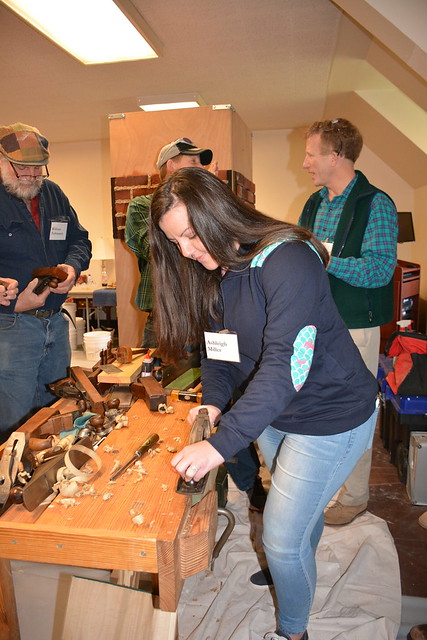 |
| Student Ashleigh Miller planes a board with a block plane. Photo courtesy of Heather Fearnbach. |
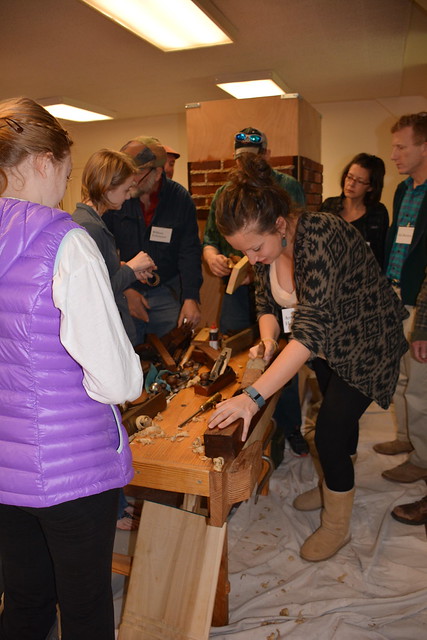 |
| Student Amelia Hughs planes a board with a wooden jointer plane. Photo courtesy of Heather Fearnbach. |
The third topic, restoring brick masonry, was presented by Wayne Thompson. Wayne is a mason specializing in historic preservation and is based in Hillsborough, NC.
 |
| Wayne discusses the importance of using the right mortar for the job. In historic preservation work, the mortar needs to be analyzed to ensure in has less compressive strength than the brick. Mortars that are harder than the brick will lead to cracking and spalling of the brick. Wayne typically uses lime putty mortar in his preservation work. |
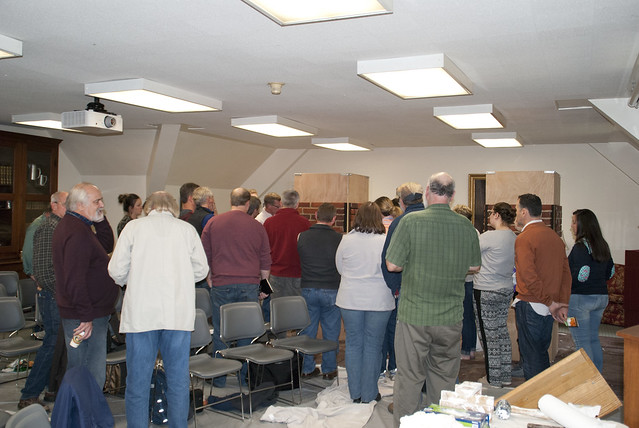 |
| Several mock-up boards were provided for hands-on repointing work. |
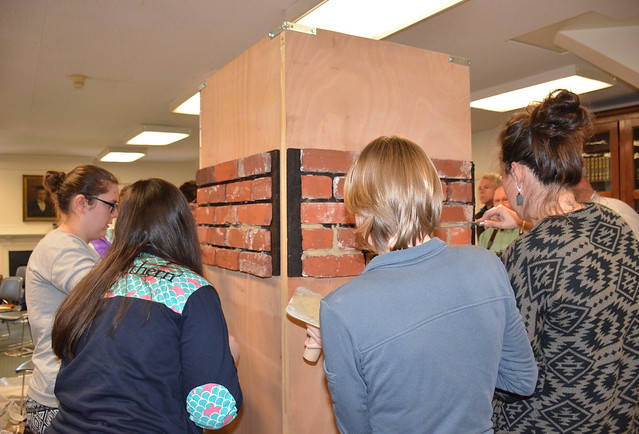 |
| Students develop their skills at repointing with lime putty mortar. Photo courtesy of Heather Fearnbach. |
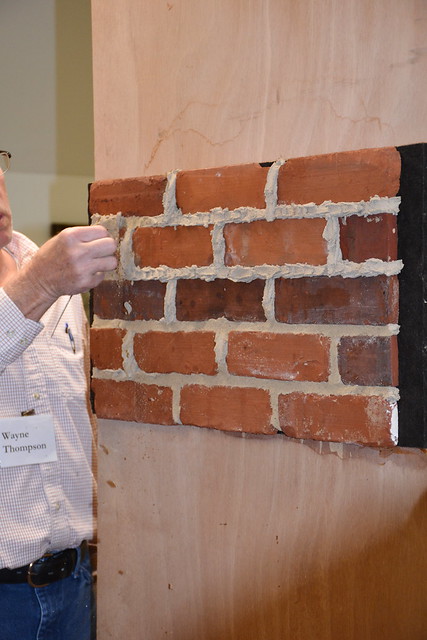 |
| Once the mortar has firmed up, Wayne demonstrates how to remove the excess mortar. Photo courtesy of Heather Fearnbach. |
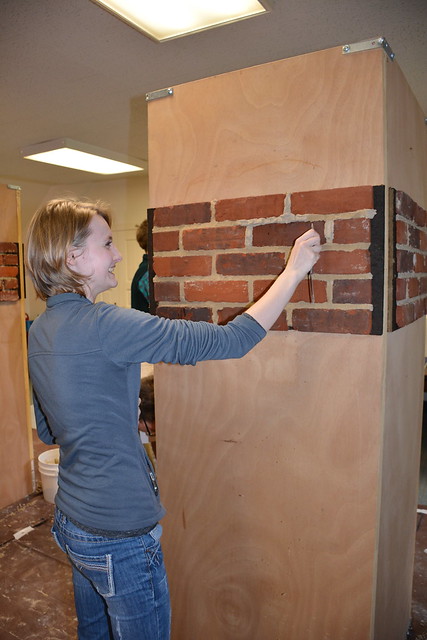 |
| Student Tink Wood enjoys developing her repointing skills. Photo courtesy of Heather Fearnbach. |
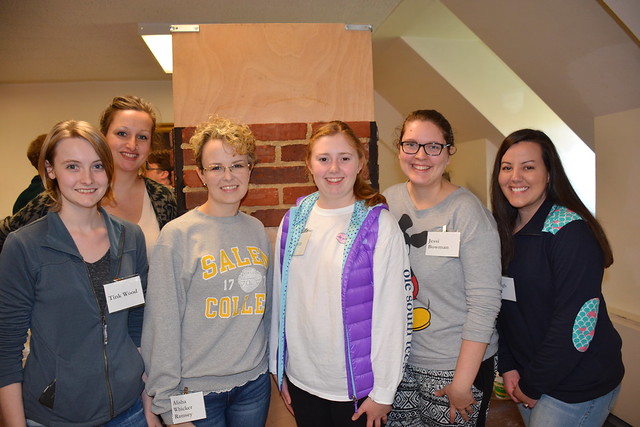 |
| Several Salem College students participating in the workshop are working on their certificate in Historic Preservation. From left to right: Tink Wood, Amelia Hughs, Alisha Whicker Ramsey, Ella Hill, Jessi Bowman, and Ashleigh Millar. Photo courtesy of Heather Fearnbach. |
 |
| Heather Fearnbach and Jeff Allen worked very hard to make this workshop possible. |
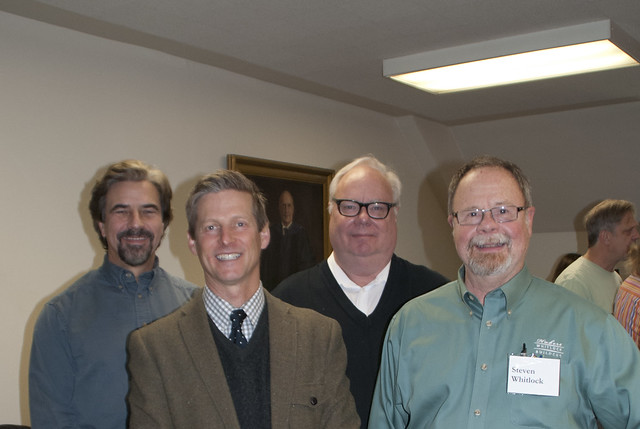 |
| Several board members on the Institute of Classical Architecture and Art - NC participated in the workshop. From left to right: Phil Goodwin, Jeff Allen (Vice President), James Collins (President), and Steven Whitlock. Also participating but not pictured: Charles McLarty. |














